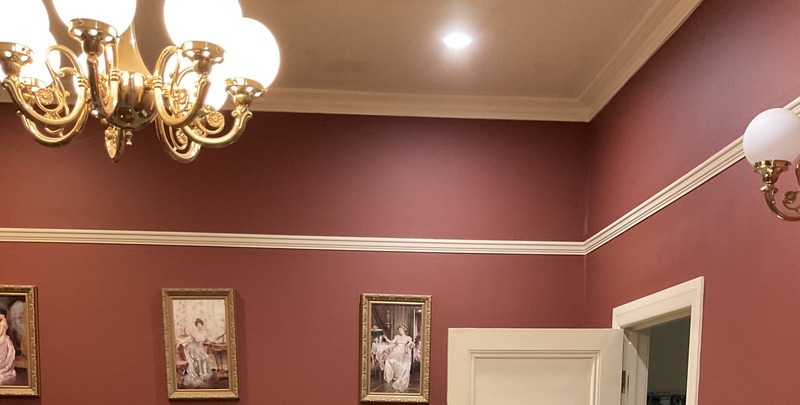
5 Things to Consider for Lighting Installation
There has never been a bigger range of choices at your fingertips if you’re planning for lighting installation. There’s a veritable kaleidoscope of styles, types, colours and purposes for lighting to choose from, so illuminating your world has never been better.
There are such a myriad of choices on the market it can be confusing. However, if you’re currently building or planning renovations that involve lighting installation, there’s no need to panic. Take a step back, consider the big picture, and look at your options. Then you’ll know what you’re looking for when you consult a professional lighting specialist.
In order to lend a hand, here’s a general five-part guide to follow when shopping for lights or designing a lighting installation.
1. The Different Styles of Lighting
Most people are aware that different rooms – and your various outdoor areas – serve different purposes. Therefore, they all require different lighting to suit each purpose and mood of those areas. There may even be different types of lighting within the one room.
Lighting experts agree there are four primary types of lighting in the home, each one specifically designed to serve a unique purpose. Let’s take a closer look at those four types of lighting installation:
- Ambient lighting – General or ambient lighting is designed to give you uniform levels of illumination over an entire space.
- Task lighting – This is lighting that is designed to serve a specific purpose, such as computer work, reading a book or cooking (e.g. desk lamps, portable lamps, directional downlights etc).
- Accent lighting – If you want to focus on certain points of interest in a room, such as a painting, sculpture or piece of furniture, use accent lighting (downlights, wall-mounted fixtures, track lights etc).
- Decorative lighting – This is all about making a bold, colourful statement and could be a lighting installation that is permanent or temporary (such as Christmas lights).
All of the above categories apply to both indoor and outdoor areas. Now let’s focus on some of the many choices to make when planning lighting installation.
2. Types of Light Bulbs
While there’s a huge range of light bulbs on the market, undoubtedly the best option for both energy efficiency and longevity is LED (light-emitting diode) lighting. However, it’s worth taking a glance at all the common types available, especially if you still have older bulbs in your home.
- Incandescent – This was the most common type of bulb for decades. It consisted of a thin wire filament inside a bulb that heats up when current flows through it, causing the filament to glow. These are now harder to find in stores as they’re not energy efficient and should be replaced with LEDs.
- Halogen – This is another type of incandescent bulb, which has a tungsten filament sealed in a cocoon filled with gas and halogen. Although they can produce brighter and more intense light, they tend to get extremely hot and are not very energy efficient.
- CFL (compact fluorescent light) – These bulbs use mercury-based gas and when electric current flows into the bulb, it ignites mercury gas vapours that produce light. Although they are energy efficient and long-lasting, breaking them can expose you to mercury, which can be dangerous.
- LED – LED lights are easily the most energy-efficient and longest-lasting type on the market. Essentially, a semiconductor emits light when current flows through it. Unlike incandescent and halogen bulbs, LEDs don’t give off heat, reducing the strain on your electrical system. They also last up to 20 times longer than traditional light bulbs.

3. The Benefits of Outdoor Lighting
There are many ways to approach outdoor lighting installation, which is dependent on the size of your outdoor space and the purpose of the lighting.
Bright floodlights or spotlights may be necessary to illuminate a large area – and may also serve as security lights – but might be too harsh for a family barbecue or quiet get-together. In such cases, outdoor lighting with lower wattage and a warmer colour temperature is a better fit. For example, you can opt for string lights or party lights hung overhead in the open spaces to create a soothing and inviting atmosphere.
Another suitable option is to install ground lighting in seating areas and on paths. It will provide the required visibility without compromising on the mood of the space. This type of lighting solution is perfect for illuminating pathways, stairs and other outdoor areas while maintaining a tranquil environment.
By choosing the appropriate lighting installation solution, you can add a touch of elegance and charm to your outdoor space while ensuring the perfect balance between practicality and aesthetics. Which leads us to …
4. The Importance of Security Lighting
There are a number of factors to consider in setting up your home security, including alarms, locks and cameras, but lighting installation is one of the most important.
You don’t want trespassers taking advantage of the darkness in order to look into windows or gain knowledge of when you’re home and when you’re not. Here are four key recommendations to consider in setting up security lighting:
- Use motion sensor lights – This is the most obvious advice for security lighting. Motion sensor lights detect movement or heat. They can detect trespassers, deter potential burglars and help householders and visitors to avoid accidents in the dark.
- Light the appropriate areas – Lighting just one small area, such as your doorway, is handy but inadequate for security. Along with the front door, consider lighting all ground-level windows, your driveway (or anywhere that cars are parked) and front and back gates.
- Choose the right bulbs – This is another space to use LEDs, which last much longer than incandescent bulbs. Consider hard-wiring these lights to your home’s power rather than using battery powered lights.
- Get the power right – The power of lighting is measured in lumens. LED lights are recommended again. A 45 watt (W) LED bulb will produce a powerful 5800 lumens, the equivalent of a 300W incandescent bulb. It’s best to confer with a professional who can advise you on the brightness required for your property.
5. The Way of the Future – Smart Lighting Installation
Would you like to manage all of your lighting from the comfort of your lounge chair? While some may view this as pure laziness, it’s actually a highly convenient feature.
Essentially, smart technology allows householders to control a range of appliances – including alarms, air conditioning, stoves, fridges, television, music, lights and more – through an app on their smartphone or tablet. Most smart lighting applications enable you to control multiple lights simultaneously through your home’s central hub, making it effortless to adjust the brightness or colour of specific lights.
This control exists both at home and remotely, meaning your lighting (indoors and outdoors) can also be used as a security device when you’re not at home.
In Conclusion
There’s a plethora of choices on the market when you’re planning for lighting installation. Given the multiple purposes of lighting in any home, there’s a lot to consider and a range of choices to be made. Choose wisely and you’ll be illuminating your home in a practical, stylish and secure way for decades to come.
Please note: This information is provided for advice purposes only. Regulations differ from state to state, so please consult your local authorities or an industry professional before proceeding with any work. See our Terms & Conditions here.
